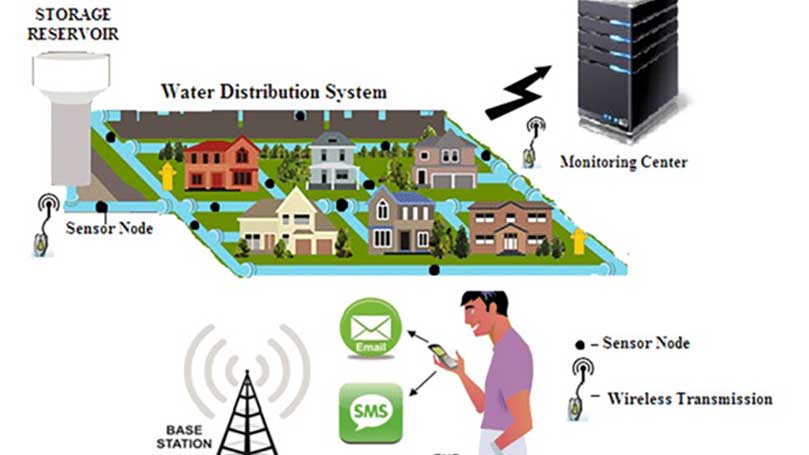
We are moving into the future from water abundance to water scarcity. Water utilities are facing growing challenges not only from scarcity of resources, but also environmental compliance, climate variability, aging infrastructure, slow network, financial shortages, lack of trained work forces, and overall inefficiencies. Mitigating those concerns are accomplished through incorporating technology that improves productivity, quality, safety, reliability and sustainability.
The more a water utility knows about its infrastructure, the better equipped it is to optimize performance, maximize asset life, improve operation and prioritizes long-term capital investment. The advantages of smart monitoring offer far more benefits than timely data collection, in-depth analysis, and cost-effective decision-making.
“You can’t manage what you don’t monitor”, an adage attributed to Lord Kelvin applies to practically everything, including water distribution systems. Water utilities do a great job of producing good quality drinkable water in their processing plants. In the plant the water purification process is well monitored and scrutinized. Then the water is pushed out into the distribution system where far less is known. The primary reason for this lack of knowledge is that monitoring the water distribution infrastructure has been traditionally difficult and expensive.
Managing drinking water treatment facilities, water reservoirs, multiple pump stations, several miles of pipelines, and wastewater treatment facilities are very challenging. Water utilities are needed to maintain clean drinking water supply to homes and businesses while ensuring safe wastewater collection and treatment. To accomplish these hefty goals, water engineers would need to remotely and continuously monitor water sources, treatment and distribution facilities and other water assets in real time without conventional power. Wireless remote monitoring devices for having critical insights into level, pressure, and flow rates could be the answer. Because the battery-powered devices are “lift-and-shift ready,” they can easily be moved from one asset to another, the utilities could place them in critical locations to eliminate blind spots in the system and be aware if adequate minimum pressure was available in the distribution system to avoid public health concerns.
Although it is nearly impossible to put a cost-benefit analysis on remote monitoring particularly during a crisis, water utility could meet demands for water while significantly stretching its resources. Engineers working on sites would be more comfortable knowing the technology would sound alarm in unsafe conditions helping them to handle pressing issues instead of manually monitoring and controlling water operations. Internet of Things (IoT) wireless battery-powered data recorders enable utilities to collect, monitor and manage water and environmental data collected from the field, and access the information via the web and mobile applications.
There is a great value in being able to monitor water levels and supply, along with pressure being supplied to ensure public health provides immeasurable benefits.